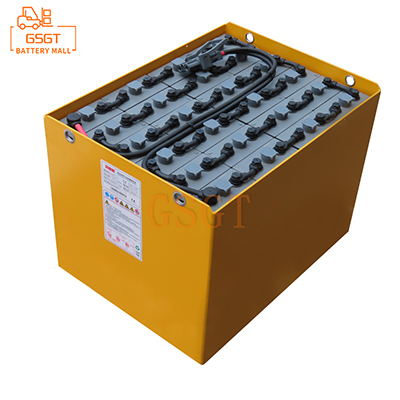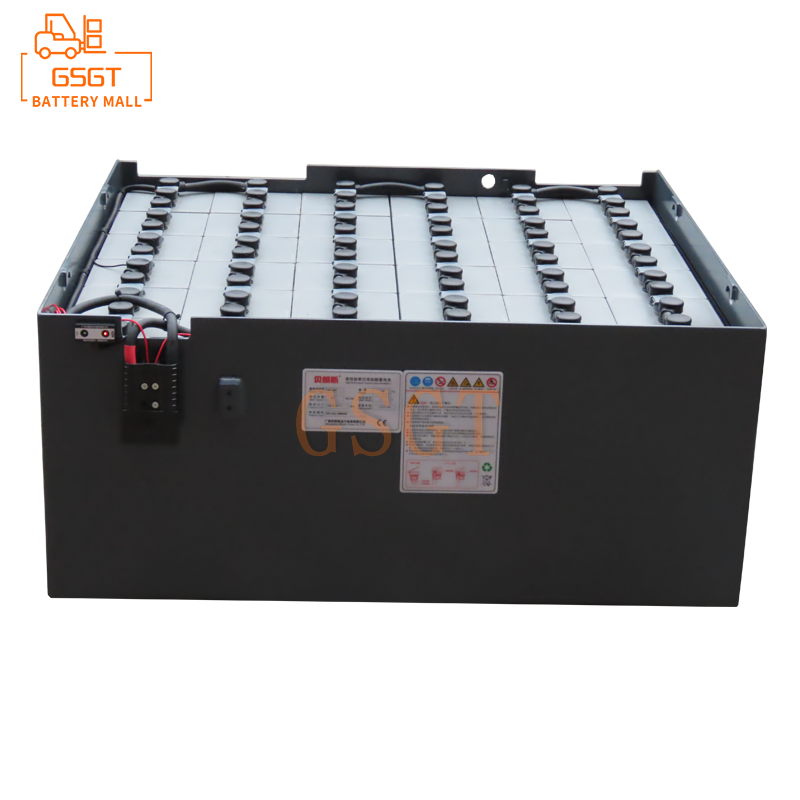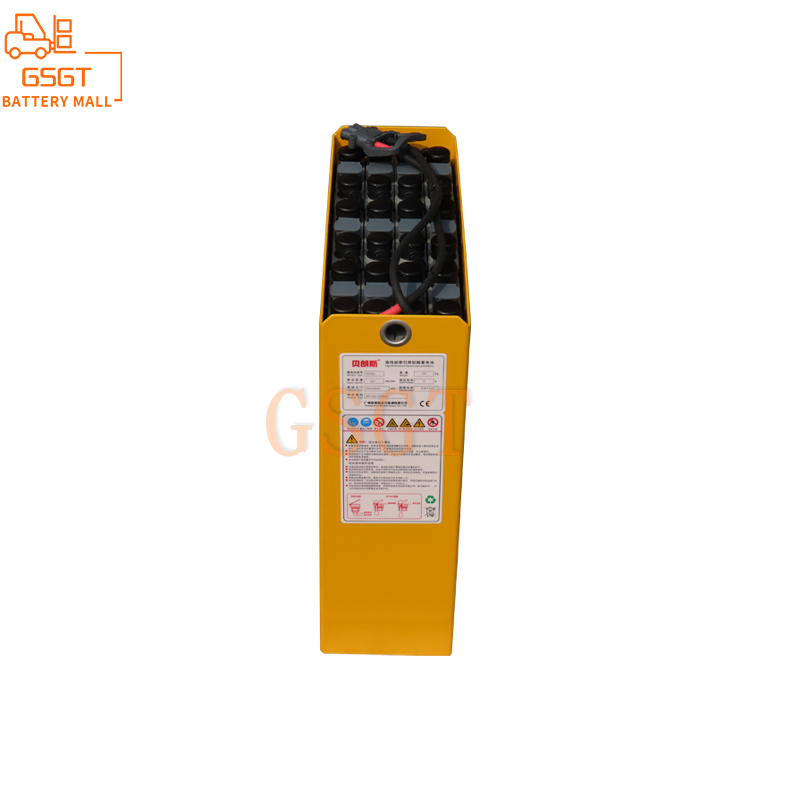Time:2025-04-07 11:01:31
Browse:717
In logistics warehousing, manufacturing and other fields, forklift as an important handling equipment is widely used. As the power source of forklift truck, the maintenance cost of lead-acid battery directly affects the operating cost of enterprises. How to reduce the maintenance cost of lead-acid battery pulled by forklift has become the focus of many enterprises.
1.The correct selection is the basis for reducing costs
When purchasing lead-acid batteries for forklift traction, price cannot be the only consideration. Choosing well-known brand products with reliable quality and stable performance, although the initial procurement cost may be relatively high, it can significantly reduce maintenance costs in the long run. The high quality battery plate is made of high purity and corrosion resistant materials, and the separator performance is excellent, which can effectively reduce the probability of internal short circuit and self-discharge of the battery and extend the service life of the battery.
At the same time, according to the actual working conditions of the forklift, the appropriate capacity and specifications of the battery should be accurately selected. If the battery capacity is too small, the forklift may not be able to meet the power demand during frequent operation, resulting in excessive battery discharge, which seriously shortens the battery life. If the capacity is too large, it will cause a waste of resources and increase unnecessary procurement costs. For example, for forklifts with long continuous operation time and heavy load every day, batteries with large capacity and high discharge rate should be selected; For forklifts with short working time and easy working conditions, batteries with relatively small capacity can be selected to achieve the best match between performance and cost.
2.Daily use and maintenance points
(1) Charge management
1. ** Avoid overcharge and undercharge ** : Overcharge will produce a large amount of gas inside the battery, accelerate the aging of the plate, and may also cause the electrolyte to dry up; Undercharging will vulcanize the battery plate and reduce the capacity. Therefore, it is necessary to strictly follow the charging parameters provided by the battery manufacturer and use the matching smart charger. The smart charger can automatically adjust the charging current and voltage according to the charging state of the battery, effectively preventing the occurrence of overcharge and undercharge.
2. ** Control charging time ** : Each charging time should not be too long, generally should not exceed 8-10 hours (the specific time depends on the battery specifications). At the same time, it is not possible to interrupt charging when the battery is not full, and a good habit of "shallow charging and shallow discharge" should be developed, that is, charging when the battery power remains 20%-30% to avoid deep discharge of the battery. For example, between forklift operations, the battery can be replenished and charged for a short time to keep the battery fully charged.
3. ** Charging ambient temperature ** : The best charging temperature of the lead-acid battery is about 25℃. When the ambient temperature is too high, the battery charging ability is enhanced. If the charging parameters are not adjusted, it is easy to overcharge. When the temperature is too low, the internal resistance of the battery increases and the charging efficiency decreases. Therefore, the temperature of the charging area should be controlled within the appropriate range as far as possible, or a charger with temperature compensation function should be used to automatically adjust the charging voltage according to the ambient temperature.
(2) Electrolyte maintenance
1. ** Periodically Check the electrolyte level ** : Check the electrolyte level at least once a week to ensure that the liquid level is between the upper and lower limits marked on the battery shell. If the liquid level is too low, distilled water or special lead-acid battery replenishment liquid should be added, and tap water or other water containing impurities should not be added to avoid impurities entering the battery and affecting the battery performance. Add the electrolyte after the battery is charged to avoid electrolyte overflow during the charging process.
2. ** Monitoring electrolyte density ** : The electrolyte density reflects the charging state of the battery and the internal chemical reaction. The density meter should be used to measure the electrolyte density once a month, and under normal circumstances, the electrolyte density under full charge is about 1.28g/cm³ (25℃). If the density deviates from the normal range, it may mean that there is a fault in the battery, such as plate vulcanization, short circuit, etc., which needs to be checked and repaired in time. For example, when the electrolyte density is found to be too low, it may be that there is leakage inside the battery, and the battery shell should be checked whether there is damage and the pole is well sealed.
(3) Battery cleaning and connection inspection
1. ** Keep the battery surface clean ** : During the operation of the forklift, the battery surface is easily contaminated with dust, oil and other impurities. If these impurities accumulate for a long time, they may form a conductive path on the battery surface, resulting in an increase in battery self-discharge. Therefore, the battery surface should be wiped weekly with a damp cloth to keep it clean and dry. At the same time, pay attention to cleaning the oxide around the battery pole, can be cleaned with baking soda solution (5% concentration), and then rinse with water, and then apply a small amount of special pole protective agent to prevent oxidation corrosion of the pole.
2. ** Periodically check the connection parts ** : Check the cables and connectors between each battery unit and between the battery and the electrical system of the forklift truck once a month to ensure that they are firmly connected and in good contact. Loose connections can lead to increased contact resistance and generate a lot of heat during charging and discharging, which can not only damage the connection site, but also affect battery performance and even cause a fire. During the inspection, use a wrench to properly tighten the connection bolt, and use a multimeter to measure the voltage drop of the connection part. Under normal circumstances, the voltage drop of the connection part should not exceed the specified value (generally a few millivolts).
3.Preventive maintenance measures
(1) Regular capacity testing
The capacity of lead-acid battery hauled by forklift truck is tested once every quarter or half a year, and the actual capacity of the battery is accurately measured by simulating the discharge process of the battery in actual use through a professional battery capacity tester. According to the test results, the single battery whose battery capacity has decreased significantly is found in time, and it is repaired or replaced separately to avoid affecting the performance and service life of the entire battery pack due to individual battery failure. For example, when it is found that the capacity of a single battery is less than 80% of the rated capacity, the pulse repair instrument can be used to repair it and try to restore the battery capacity.
(2) Establish maintenance record files
Establish a detailed maintenance record file for each group of forklift traction lead-acid batteries, recording the battery purchase information, use time, each charge and discharge, maintenance operations (such as electrolyte addition, cleaning, connection inspection, etc.), capacity test results and fault maintenance records. By analyzing maintenance records, you can summarize the usage rules and performance trends of batteries, identify potential problems in advance, and formulate more targeted maintenance plans to effectively reduce maintenance costs. For example, it is found from the record that the battery of a forklift truck has been charged significantly more times in a specific period of time, which may mean that the battery performance has begun to decline, and it needs to be strengthened monitoring and maintenance.
(3) Staff training and awareness raising
Carry out professional training for forklift operators and battery maintenance personnel, so that they are familiar with the correct use of forklift traction lead-acid batteries, maintenance points and safety precautions. Operators should understand how to reasonably plan the forklift operation process to avoid excessive battery discharge and long-term high current discharge; Maintenance personnel must master battery maintenance skills and handle common battery faults in a timely and accurate manner. At the same time, through the regular organization of training and safety publicity activities, to enhance employees' awareness of the importance of battery maintenance, enhance the sense of responsibility of employees, and promote employees to consciously comply with battery maintenance operating procedures, reduce battery damage and maintenance costs caused by improper operation.
To reduce the maintenance cost of lead-acid batteries for forklift trucks, it is necessary to start from many aspects such as selection, daily use and maintenance, preventive maintenance and application of advanced technologies and products. By taking these measures in a comprehensive manner, enterprises can not only extend the battery life, reduce the frequency of battery replacement, but also improve the working efficiency of forklifts, reduce the overall operating costs, and enhance the competitiveness of enterprises in the market.

$1105

$3405

$4045

$1270

MESSAGE
Professional And Efficient
Security
Affordable Price
Professional Services